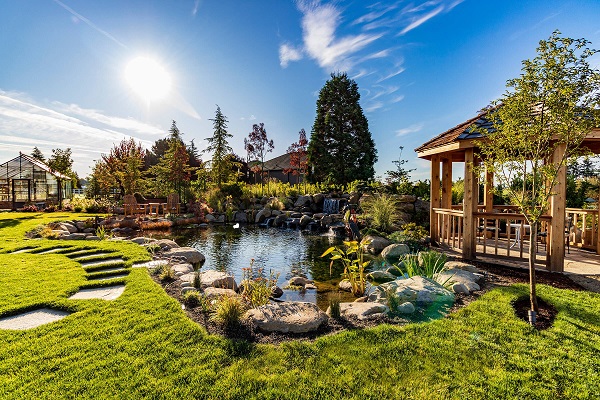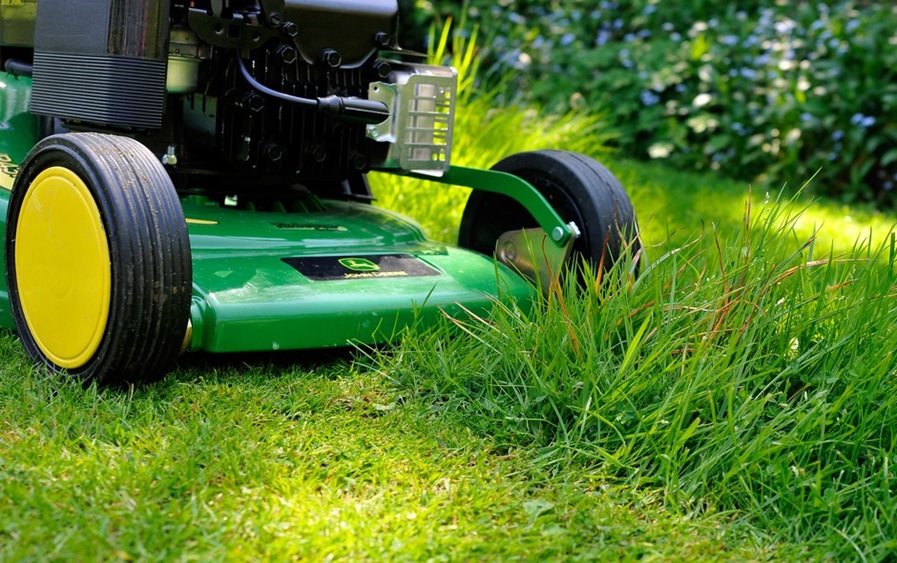Creating and maintaining a vibrant, healthy landscape requires more than just planting a few trees and flowers. A successful landscape depends on a comprehensive approach that includes proper lawn maintenance, efficient sprinkler system service, and an understanding of soil health, plant selection, and seasonal care. This guide delves into essential strategies to ensure your landscape thrives year-round.
Lawn Maintenance
Effective lawn maintenance is foundational to a healthy landscape. A well-maintained lawn not only enhances the aesthetic appeal of your property but also contributes to the overall health of the landscape. Key components of lawn maintenance include mowing, fertilization, aeration, and pest control.
Mowing
Regular mowing is crucial to maintaining the health of your lawn. The optimal mowing height varies depending on the grass species, but it is generally advisable to never cut more than one-third of the grass height in a single mowing. Cutting too short can stress the grass, leading to increased susceptibility to weeds and diseases. Ensure your mower blades are sharp to make clean cuts and avoid damaging the grass.
Fertilization
Fertilization provides essential nutrients that promote healthy grass growth. It is important to choose the right type of fertilizer and apply it according to the specific needs of your lawn. Soil testing can help determine nutrient deficiencies and guide your fertilization schedule. Generally, lawns benefit from a balanced fertilization program that includes both nitrogen for growth and potassium for disease resistance.
Aeration
Aeration involves perforating the soil with holes to allow air, water, and nutrients to penetrate the root zone. This practice is especially beneficial for lawns with compacted soil. Aeration helps to relieve soil compaction, improve root development, and enhance overall lawn health. It is typically performed in the spring or fall, depending on your grass type and local climate.
Pest Control
Pests and diseases can severely impact lawn health. Regular inspection and timely intervention are essential to managing these issues. Integrated pest management (IPM) strategies, which combine cultural, biological, and chemical controls, can help address pest problems effectively while minimizing harm to beneficial organisms.
Sprinkler System Service
A well-functioning sprinkler system is integral to maintaining a healthy landscape. Efficient irrigation ensures that plants receive the appropriate amount of water, which is critical for their growth and overall health. Regular sprinkler system service helps to prevent issues such as water wastage, uneven coverage, and system malfunctions.
System Inspection
Regular inspections of your sprinkler system are necessary to ensure it operates efficiently. Check for signs of wear and tear, such as broken sprinkler heads or leaking pipes. Inspect the system for proper alignment and adjust sprinkler heads to avoid watering sidewalks and driveways. Routine inspections can identify and address potential problems before they escalate.
Watering Schedule

Establishing an appropriate watering schedule is key to conserving water and promoting healthy plant growth. The frequency and duration of watering depend on various factors, including plant types, soil conditions, and local climate. It is generally best to water early in the morning to minimize evaporation and allow plants to absorb moisture before the heat of the day.
System Upgrades
Advancements in irrigation technology offer opportunities for improving system efficiency. Consider upgrading to a smart irrigation controller, which adjusts watering schedules based on weather conditions and soil moisture levels. This technology can help reduce water usage and ensure that your landscape receives optimal irrigation.
Winterization
Proper winterization of your sprinkler system is essential to prevent damage from freezing temperatures. Drain the system to remove any remaining water, and insulate exposed pipes and valves. Winterization helps to avoid costly repairs and ensures that your system is ready for use when the growing season begins.
Conclusion
A healthy landscape requires careful attention to various factors, including lawn maintenance and sprinkler system service. By implementing effective mowing, fertilization, aeration, and pest control practices, you can ensure your lawn remains lush and vibrant. Regular sprinkler system service, including inspection, appropriate watering, and system upgrades, contributes to efficient irrigation and overall landscape health.
By prioritizing these crucial considerations, you can create and maintain a thriving landscape that enhances the beauty and functionality of your outdoor space.

